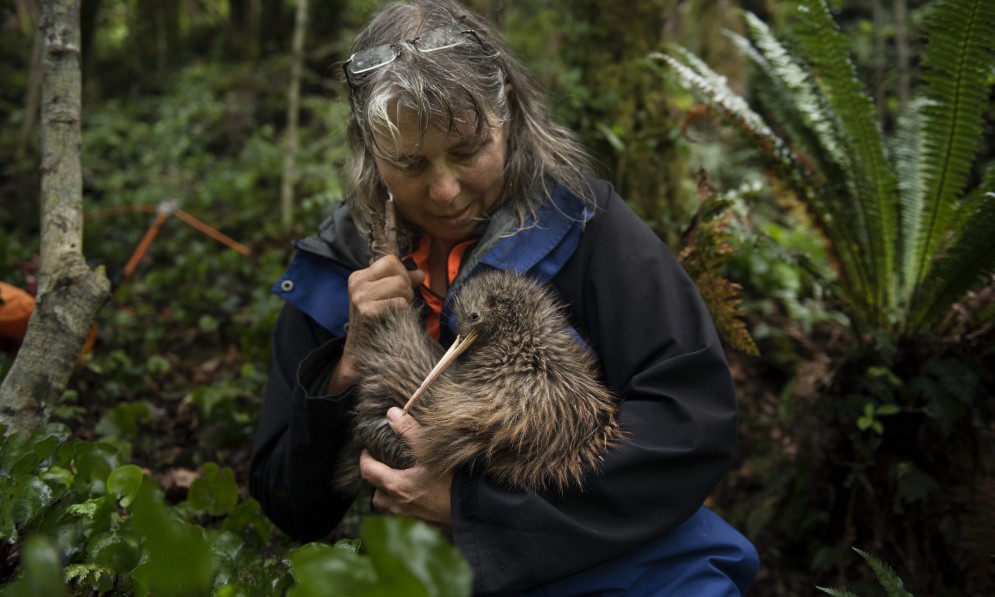After being locally extinct for more than a century, kiwi first returned to Wellington in 2000. How are they doing today? Alan Peck investigates.
Forest & Bird magazine
A version of this story was first published in the Summer 2023 issue of Forest & Bird magazine.
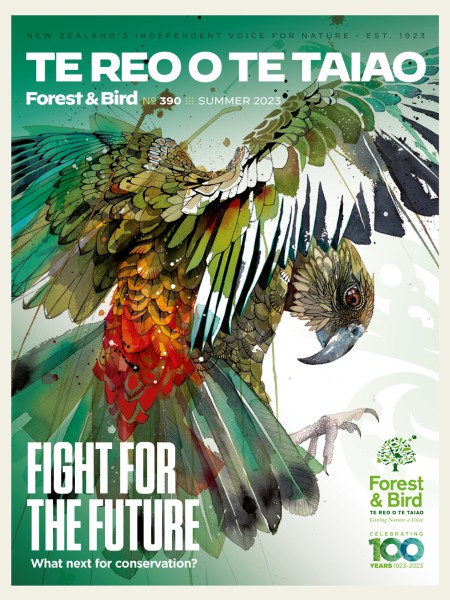
Two hundred years ago, Te Upoko o te Ika a Māui would have echoed to the sound of kiwi calling at night. The shrill call of the male pukupuku little spotted kiwi and his more melodic female mate would have been heard throughout the Wellington area.
And the equally noisy male rowi Ōkarito brown kiwi and the harsh call of his female mate would have reverberated along the region’s forested ridgelines and valleys. These were the two kiwi species naturally occupying the land we now call Greater Wellington.
Sadly, for well over 100 years, these sounds disappeared. The little spotted kiwi was extinct on the North Island by the 1870s and a few decades later on the South Island. Today, only about 1800 survive, living mainly on Kāpiti Island just north of Wellington.
We are lucky to have this species of kiwi at all. In 1912, five pukupuku were taken to Kāpiti Island in an attempt to ward off imminent extinction. Three bred, and they are the ancestors of all today’s little spotted kiwi.
Rowi fared no better. Today, there is only one natural population of about 450 in the Ōkārito forest and surrounds of South Westland.
The reintroduction of kiwi to the Wellington region began in April 2000, first in Karori Sanctuary, then Remutaka Forest Park, and most recently to the south and west of the capital.
History was made in 1999, when a predator-proof fence was completed at the Karori Sanctuary now known as Zealandia. Protecting natural forest, streams, and reservoir lakes, the 225ha was just 3km from the Beehive. It became the first fenced eco-sanctuary of its kind in New Zealand and the first urban sanctuary in any capital city in the world.
One year later, it was considered safe to bring back several of Wellington’s lost species, among them pukupuku. Two introductions took place in 2000 and 2001, with a total of 40 birds being transferred from Kāpiti Island.
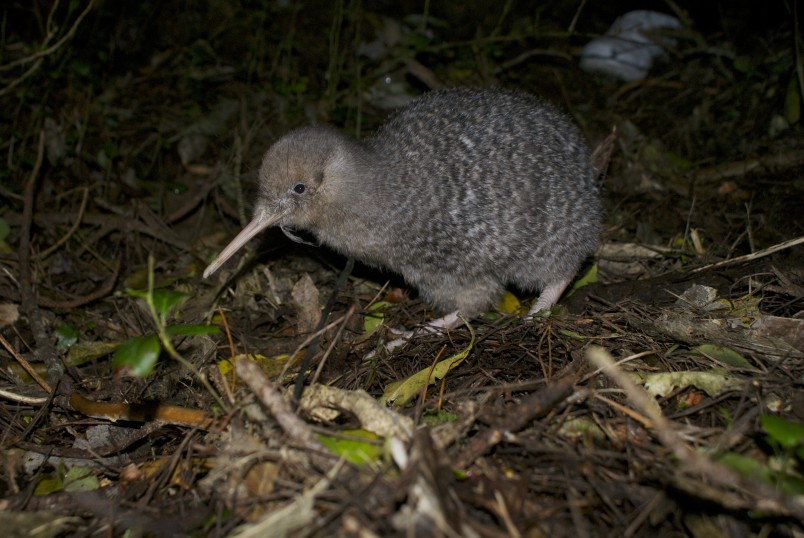
Little-spotted kiwi, Zealandia. Image Kimberley Collins
The Zealandia population is now estimated at almost 200! Zealandia is now home to the second-largest population of little spotted kiwi in the country and the only wild population on the mainland.
Being half the size of the four other kiwi species, pukupuku are not capable of defending themselves against their number one enemy, the stoat, so a predator-free island or fenced mainland enclosure is necessary for their survival.
The kiwi at today’s Zealandia Ecosanctuary roam free in a safe environment that would have once been their natural home.
To the east of Wellington Harbour, the Remutaka Forest Park is a vast area of mature native forest, regenerating forest, and exotic (pine) forest.
From the late 1980s, a volunteer group, now known as the Remutaka Conservation Trust, began what was to become an extensive trapping network aimed at making the forest safer for native species. By the early 2000s, the idea of reintroducing kiwi was hatched.
After battling significant official scepticism, the trust gained approval to release a small number of kiwi.
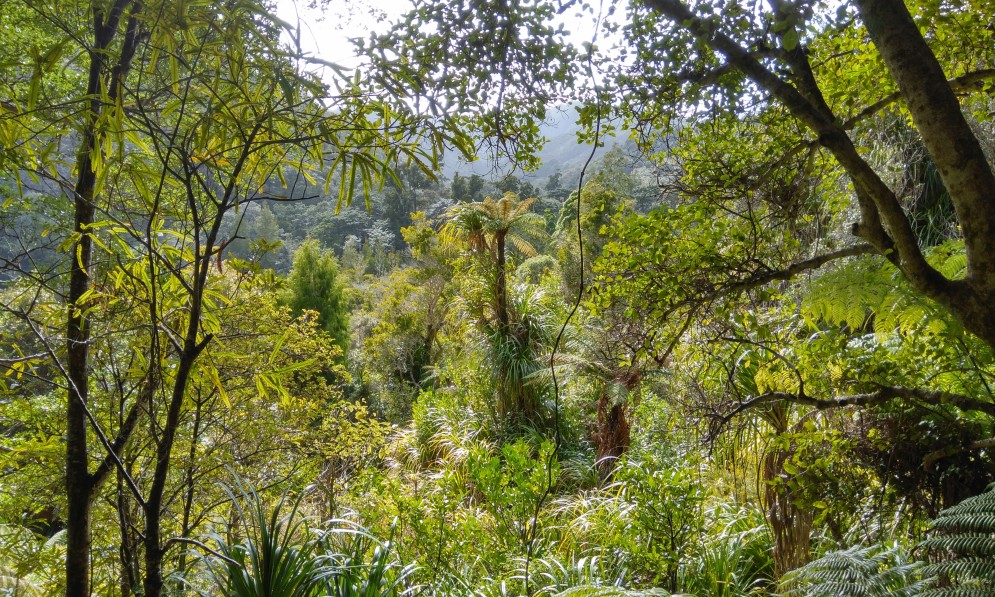
Remutaka Forest Park kiwi habitat. Image Rosemary Thompson
Six North Island brown kiwi, bred in captivity and of mixed provenance, were obtained and released in the Remutaka range as a trial in May 2006.
It quickly became evident that the Remutaka forest environment was suitable for kiwi. The birds were breeding, with the eggs laid being the first in that area for about 100 years.
This success resulted in approval to release more kiwi, and a second translocation of 20 kiwi from Little Barrier Island was completed in 2009. Since then, kiwi have dispersed throughout the Remutaka Forest Park.
Volunteers now tend more than 2000 traps across an area of 7500ha. The kiwi (estimated population 200) are closing in on the Wainuiomata township, and kiwi calls can be heard at night throughout the area.
It was the first time a kiwi conservation project of this magnitude had been initiated, managed, and funded solely by a community-based organisation in Aotearoa New Zealand.
Meanwhile, Save The Kiwi kōhanga sites, such as Sanctuary Mountain Maungatautari, are at or near carrying capacity and need to find appropriately large sites at scale, with sufficient pest control, to release kiwi.
Enter the award-winning Capital Kiwi Project, which is committed to restoring a wild kiwi population across a huge area of hill country south and west of Wellington City, stretching from Red Rocks to Porirua.
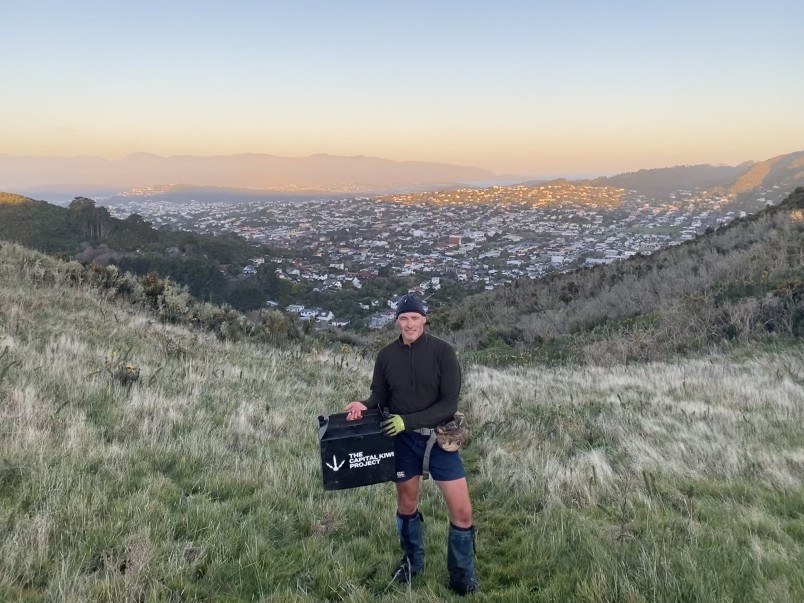
Capital Kiwi founder Paul Ward monitoring kiwi, Skyline walkway, Karori.
Since November 2022, a total of 63 kiwi nui North Island brown kiwi have been successfully introduced into the scrub-covered hills of Terawhiti Station above Mākara. The first 13 came from Ōtorohanga Kiwi House (with gifting iwi Ngāti Hinewai), and the next 50 from Sanctuary Mountain Maungatautari (with Ngāti Korokī Kahukura) in May 2023.
So far, the signs are promising, with the birds pairing up and gaining weight. Traps are serviced by Capital Kiwi contractors on private land and by volunteers on public land. Together, they are clearing more than 4600 traps across an area the size of the Abel Tasman National Park. The plan is to release up to 250 kiwi over the next few years.
At the moment, Wellington’s kiwi live in relatively isolated areas or behind a predator-proof fence. Can we imagine a future where kiwi are popping up next to your garden fence?
Although wild kiwi encounters are fairly common in places such as Rakiura Stewart Island, Russell, Aotea Great Barrier Island, the Coromandel, and other locations around the country, these are all sparsely inhabited areas close to forests and other kiwi habitat.
It is highly probable that people living in the outer limits of Karori and parts of Wainuiomata, Whitemans Valley, Stokes Valley, Makara, and Ōhwiro Bay will one day have kiwi at their fences.
But the idea of a true urban (or even suburban) kiwi is likely to remain an unrealisable dream.
Apart from the hostile environment and fragmented habitats, there are the city’s dogs and cats to contend with. Kiwi seldom survive encounters with dogs, and cats are a significant threat to young kiwi.
Let’s just appreciate how the hard work and initiative of hundreds of dedicated enthusiasts have resulted in more than 450 kiwi in our backyard when, less than 25 years ago, there were none.
Alan Peck is a retired naval officer and pursues his wildlife interests as an active member of the Remutaka Conservation Trust and as a guide at Zealandia.

